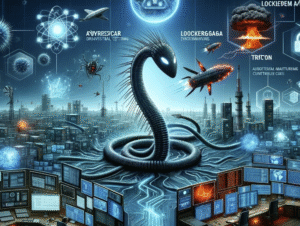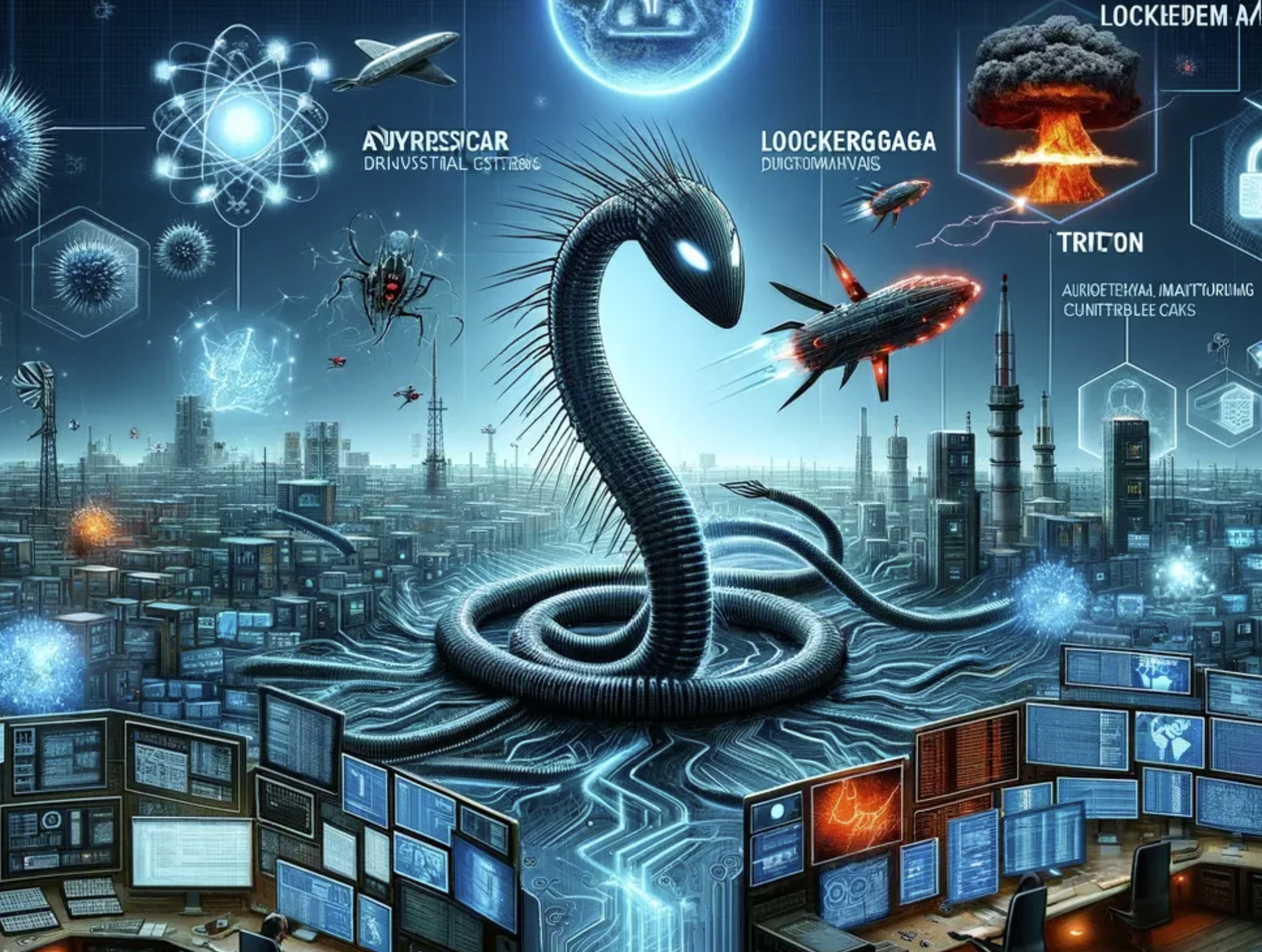Introduction
In the past decade, cybersecurity incidents have moved beyond stolen data—they now threaten physical safety, national security, and global economies. Operational Technology (OT) systems, which control critical infrastructure like power grids, factories, and chemical plants, are increasingly targeted by sophisticated attackers.
According to a report by IBM, OT cyberattacks increased by over 200% between 2018 and 2022, with manufacturing becoming the most targeted sector. These incidents prove that cyberattacks can cause blackouts, equipment damage, economic disruption, and even loss of life.
In this article, we’ll explore five of the most unforgettable OT cyberattacks—Stuxnet, Triton, the Ukrainian Power Grid Attack, LockerGoga, and NotPetya. Each case reshaped how the world views cyber risks in industrial environments and highlighted the urgent need for stronger defenses.

⚡ 1. The Stuxnet Attack (2010)
Overview
Stuxnet is widely considered the first cyber weapon. Discovered in 2010, it was a sophisticated worm designed to sabotage Iran’s nuclear facilities by targeting Siemens industrial control systems.
-
How it spread: Via infected USB drives, exploiting multiple zero-day vulnerabilities in Microsoft Windows.
-
Target: Programmable Logic Controllers (PLCs) controlling centrifuges at the Natanz uranium enrichment facility.
-
Unique feature: Stuxnet only activated when it detected the exact type of Siemens equipment it was designed for.
Impact
-
Physically damaged hundreds of centrifuges, delaying Iran’s nuclear program.
-
Demonstrated that malware could cause physical destruction.
-
Pushed governments and industries worldwide to strengthen OT cybersecurity.
📌 Lesson Learned: Even air-gapped systems are not immune. Insider access and supply chain risks must be addressed in OT environments.
🛢️ 2. The Triton Malware Attack (2017)
Overview
In 2017, a petrochemical plant in Saudi Arabia was attacked by a malware strain later named Triton (or Trisis). Unlike other malware, Triton targeted the Safety Instrumented System (SIS)—the last line of defense that prevents industrial accidents.
-
Discovery: Triggered by an unexpected plant shutdown.
-
Capabilities: Reprogrammed safety controllers, potentially disabling failsafe mechanisms.
-
Motivation: Believed to be sabotage, not financial gain.
Impact
-
Could have caused explosions or catastrophic plant failures.
-
Marked the first cyberattack designed to directly threaten human lives.
-
Raised global alarms about cyber-physical terrorism in critical industries.
📌 Lesson Learned: Safety systems must be isolated and monitored just as rigorously as production systems.
🔌 3. The Ukrainian Power Grid Attack (2015)
Overview
In December 2015, Ukraine experienced the first confirmed blackout caused by a cyberattack. Hackers used spear-phishing emails to infiltrate three energy distribution companies and deployed the BlackEnergy malware.
-
Tactics: Attackers gained remote control of SCADA systems.
-
Impact: Shut down power substations and disabled backup systems.
-
Result: 230,000 residents lost electricity for several hours in the middle of winter.
Impact
-
Showed that cyberattacks can cripple national infrastructure.
-
Believed to be carried out by state-sponsored actors as part of geopolitical conflict.
-
Exposed the fragility of legacy grid systems dependent on outdated technology.
📌 Lesson Learned: Critical energy infrastructure requires layered security, from phishing prevention to incident response playbooks.
🏭 4. The LockerGoga Ransomware Attack (2019)
Overview
In March 2019, Norsk Hydro, a Norwegian aluminum giant, was hit by LockerGoga ransomware. The malware encrypted files across its IT and OT networks, forcing plants to shut down.
-
Entry Point: Believed to be phishing or unpatched vulnerabilities.
-
Impact: Production systems were crippled, forcing manual operations.
-
Financial Loss: Norsk Hydro reported over $50 million in damages.
Impact
-
Demonstrated how ransomware can paralyze manufacturing supply chains.
-
Highlighted the importance of business continuity and disaster recovery.
-
Norsk Hydro’s transparency in handling the incident was praised as a model for crisis response.
📌 Lesson Learned: Backups and incident response planning are essential for industrial resilience.
🌍 5. The NotPetya Attack (2017)
Overview
In June 2017, the NotPetya malware spread rapidly across the globe. It appeared to be ransomware but was actually a wiper, designed to destroy data permanently.
-
Exploited vulnerability: EternalBlue, the same flaw used by WannaCry.
-
Origin: Initially targeted Ukrainian organizations but spread worldwide within hours.
-
Victims: Maersk (shipping), FedEx, airports, hospitals, and government agencies.
Impact
-
Caused an estimated $10 billion in damages globally.
-
Maersk, the shipping giant, reported losses in the hundreds of millions and had to rebuild its entire IT network.
-
Marked a turning point where cyberattacks became tools of geopolitical warfare.
📌 Lesson Learned: Patch management and network segmentation are critical to limiting malware spread.
📊 Table: Top 5 OT Cybersecurity Incidents
| Attack | Year | Sector Targeted | Impact | Key Lesson |
|---|---|---|---|---|
| Stuxnet | 2010 | Nuclear / Energy | Physical destruction of equipment | Even air-gapped systems are at risk |
| Triton | 2017 | Petrochemical | Threat to human safety & plant shutdown | Protect safety systems rigorously |
| Ukraine Power Grid | 2015 | Energy | 230,000 people left without electricity | Secure legacy critical infrastructure |
| LockerGoga | 2019 | Manufacturing | $50M+ losses, halted production | Backups & incident response vital |
| NotPetya | 2017 | Global (multi-sector) | $10B+ damages, global disruption | Patch management & segmentation |
🔐 Conclusion
These five unforgettable OT cyberattacks redefined the boundaries of cybersecurity. From Stuxnet’s sabotage of nuclear equipment to NotPetya’s global economic fallout, they prove that cyber threats are no longer just about stolen data—they can halt economies, endanger lives, and reshape geopolitics.
For organizations operating critical infrastructure, the message is clear:
-
Invest in cyber resilience.
-
Conduct regular risk assessments.
-
Implement strong incident response plans.
-
Foster international collaboration against cyber warfare.
📌 For further insights, check out the U.S. Cybersecurity and Infrastructure Security Agency (CISA) resources on ICS/OT security.
The world has learned hard lessons from these attacks. The question is whether we are applying them fast enough to outpace the next wave of OT cyber threats.







